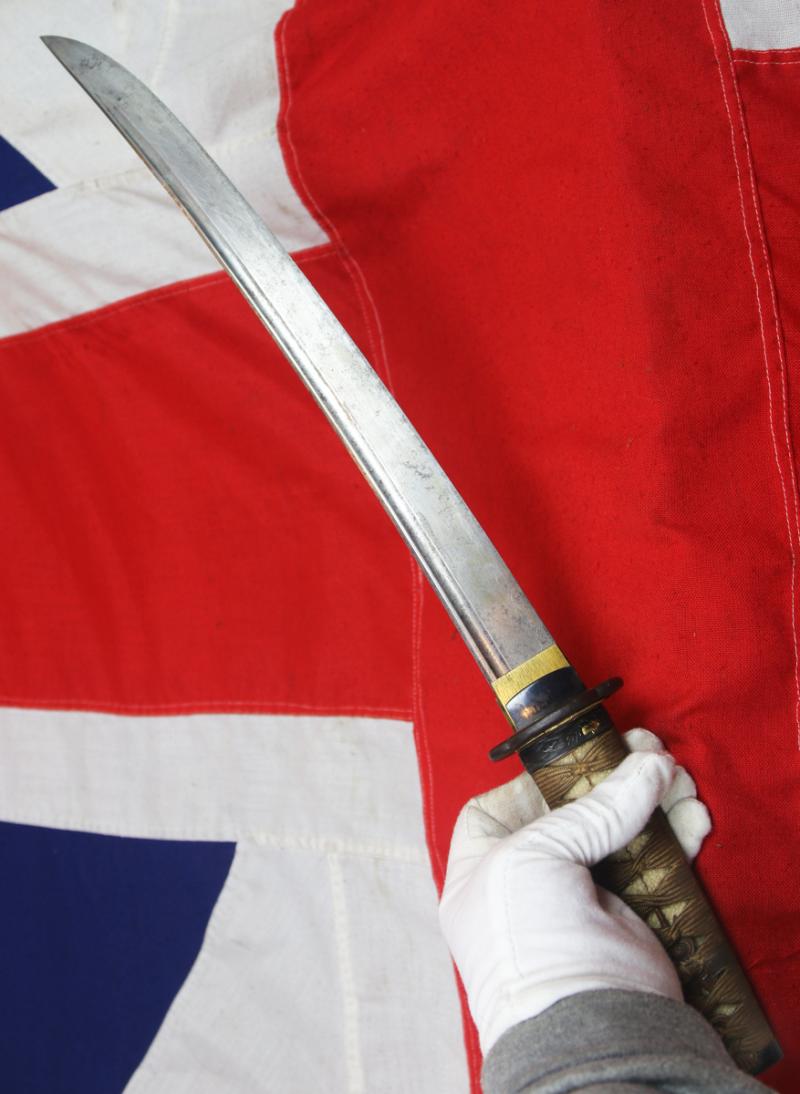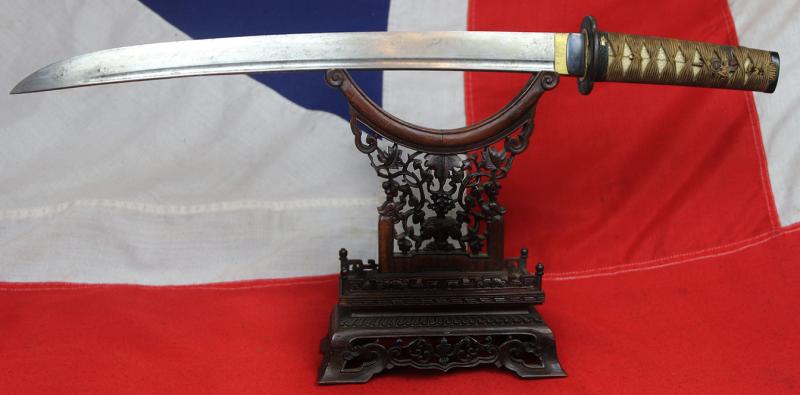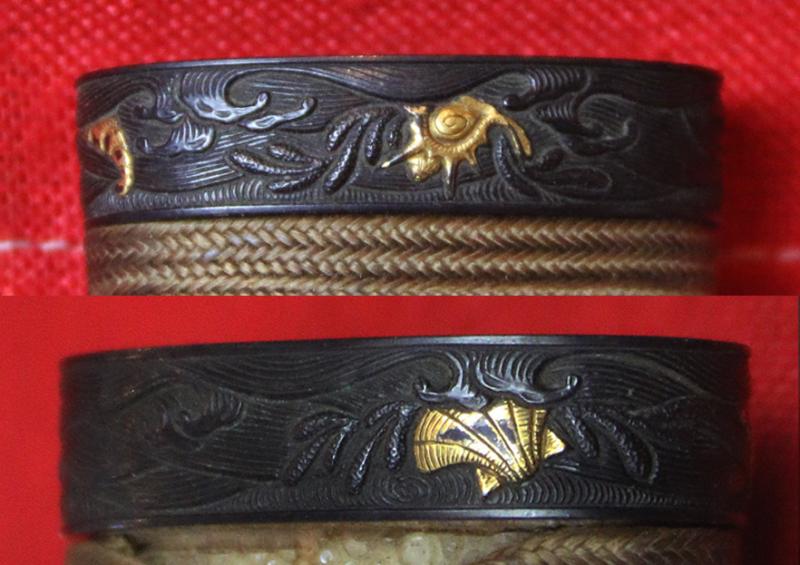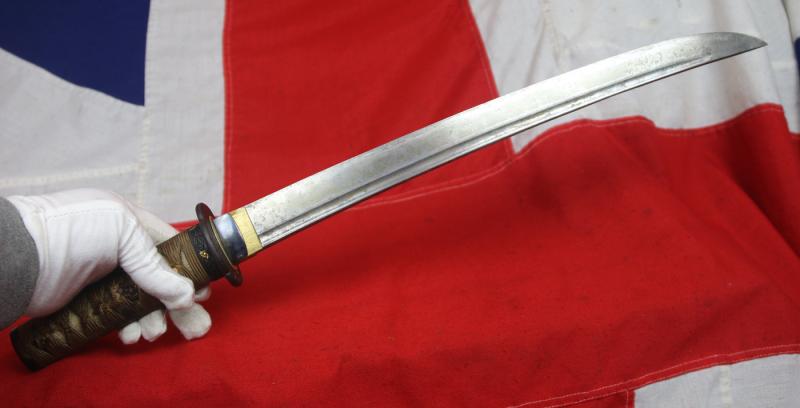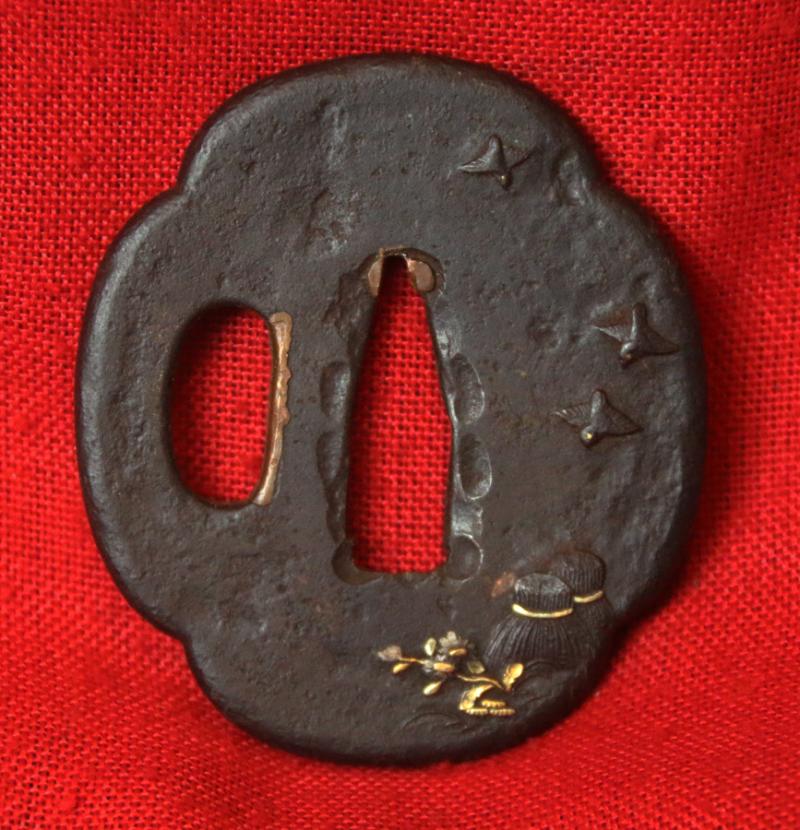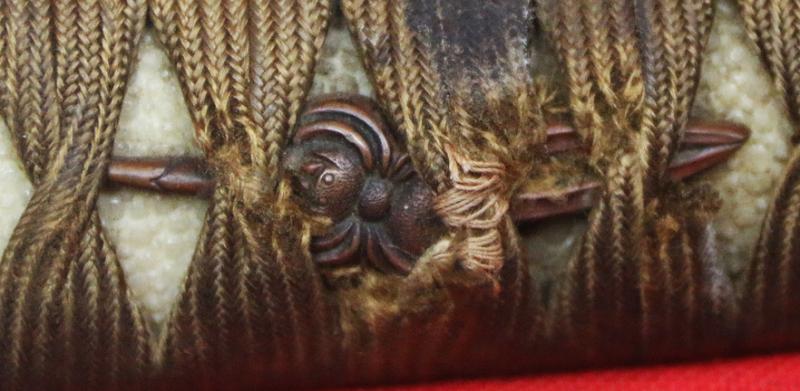A Fine and Beautiful Koto Period Wakizashi, Circa 1550
In all original Edo period fittings and mounts. A Very nice impressive wide flat sided blade with wide full length hi to both blade faces. It bears a good deep hamon. A very charming iron mokko tsuba with takebori small swooping birds and small pure gold highlights. the fuchi of shakudo and pure gold decorated shell fish and coral in crashing waves, and very fine quality. It has a pair of copper menuki under the wrap that are takebori spiders. the fuchi is carved buffalo horn. Very good original Edo saya with rich black urushi lacquer. Set within the kozuka pocket is a gold decorated kozuka with a good takebori crayfish.
Cherished for its infinite versatility, urushi lacquer is a distinctive art form that has spread across all facets of Japanese culture from the tea ceremony to the saya scabbards of samurai swords
Japanese artists created their own style and perfected the art of decorated lacquerware during the 8th century. Japanese lacquer skills reached its peak as early as the twelfth century, at the end of the Heian period (794-1185). This skill was passed on from father to son and from master to apprentice.
The varnish used in Japanese lacquer is made from the sap of the urushi tree, also known as the lacquer tree or the Japanese varnish tree (Rhus vernacifera), which mainly grows in Japan and China, as well as Southeast Asia. Japanese lacquer, 漆 urushi, is made from the sap of the lacquer tree. The tree must be tapped carefully, as in its raw form the liquid is poisonous to the touch, and even breathing in the fumes can be dangerous. But people in Japan have been working with this material for many millennia, so there has been time to refine the technique!
The urushi lacquer has a few natural and certainly permissible for its age, natural wear marks and nicks.
The blade would improve with polishing which we are undertaking, it would reveal the hamon beautifully. The tsuka-ito hilt has just been rebound yet to photograph to the same exulted Japanese standard, with traditional Japanese silk ito, and now sent to repolish
Overall in saya 23.25 inches, blade 16.5 inches.
Code: 24562
Price
on
Request


